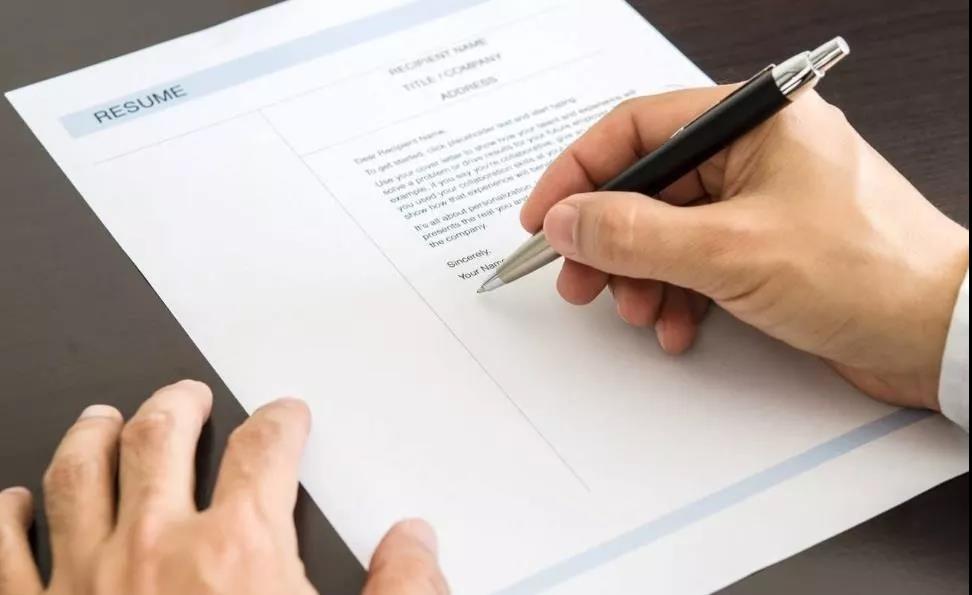挖掘机臂液压系统的模型化参量估计外文翻译
相关热词搜索:
挖掘机臂液压系统的模型化参量估计 摘 要 首先介绍了液压挖掘机的一个改装的电动液压的比例系统。根据负载独立流量分配( LUDV )系统的原则和特点,以动臂液压系统为例并忽略液压缸中的油大量泄漏,建立一个力平衡方程和一个液压缸的连续性方程。基于电动液压的比例阀门的流体运动方程,测试的分析穿过阀门的压力的不同。结果显示压力的差异并不会改变负载,此时负载接近2.0MPa。然后假设穿过阀门的液压油与阀芯的位移成正比并且不受负载影响,提出了一个电液控制系统的简化模型。同时通过分析结构和承重的动臂装置,并将机械臂的力矩等效方程与旋转法、参数估计估计法结合起来建立了液压缸以等质量等为参数的受力平衡参数方程。最后用阶跃电流控制电液比例阀来测试动臂液压缸中液压油的阶跃响应。根据实验曲线,阀门的流量增益系数被确定为2.825×10-4m3/(s·A),并验证了该模型。
关键词:挖掘机,电液比例系统,负载独立流量分配( LUDV )系统,建模,参数估计 1 引言 由于液压挖掘机具有高效率、多功能的优点,所以被广泛应用于矿山,道路建设,民事和军事建设,危险废物清理领域。液压挖掘机在施工机械领域中也发挥了重要作用。目前,机电一体化和自动化已成为施工机械发展的最新趋势。因此,自动挖掘机在许多国家逐渐变得普遍并被认为重点。挖掘机可以用许多控制方法自动地控制操作器。
每种使用方法,研究员必须知道操作器结构和液压机构的动态和静态特征。即确切的数学模型有利于控制器的设计。然而,来自外部的干扰使得机械结构模型和各种非线性液压制动器的时变参数很难确定。关于挖掘机时滞控制的研究已经有人在研究了。NGUYEN利用模糊的滑动方式和阻抗来控制挖掘机动臂的运动,SHAHRAM等采取了阻抗对挖掘机远距传物的控制。液压机构非线性模型已经由研究员开发出来了。
然而,复杂和昂贵的设计控制器限制了它的应用。在本文,根据提出的模型,根据工程学和受力平衡,挖掘机臂液压机构模型简化为连续均衡的液压缸和流动均衡的电液比例阀;
同时,确定了模型的参量的估计方法和等式。
2 挖掘机机械臂概述 液压挖掘机的挖掘研究结果如图1。在图中,Fc表示液压缸,动臂的重力,斗杆,铲斗的重力等在B点合力,其方向是沿着液压缸AB方向;
Fc可分解成Fc1和Fc2 ,他们的方向分别为垂直于和平行于O1B ,加速度ac的方向与Fc是相同的,并且ac也可以分解成ac1和ac2;
G1 , G2和G3分别是动臂,斗杆和铲斗的重心;
m1,m2,m3是它们各自的质量且能通过实验给定(m1=868.136kg,m2=357.115kg and m3=210.736kg);
Ol,O2 和O3是铰接点;
G1′,G2′和 G3′分别是G1 , G2和G3在X轴上的投影。
挖掘机的臂被认为是一个三个自由度的的机械手(三个测斜仪分别装在动臂,斗杆和铲斗上)。在跟踪控制实验中,其目标轨迹是根据挖掘机机械手运动学方程确定的。然后,动臂,斗杆和铲斗的动作有操作员控制。为了适应自动控制,普通液压控制挖掘机应改造电动液压控制挖掘机。
基于SW E-85型原有的液压系统,把先导液压控制系统更换为先导电液控制系统。新改进的液压系统如图2所示。在这系统中,因为动臂,斗杆和铲斗具有相同的特点,将动臂的液压系统作为一个例子。在先导电液控制系统中,先导电液比例阀是在原始的SX-l4主要阀门基础上增加比例泄压阀衍生出的并且用电子手柄替代液压手柄。
挖掘机的改装系统仍是具有良好的可控性的LUDV系统(图3 )。在图3中 , y是可移动的活塞的位移;
Q1 和 Q2分别代表流进和流出液压缸的流量;
pl,p2,ps 和pr分别表示汽缸的有杆腔和无杆腔,系统和回油路的压力;
A1 和 A2分别表示汽缸的有杆腔和无杆腔的面积;
xv代表阀芯的位移;
m代表加载的负载;
图1 挖掘机工作装示意图 图2 挖掘机液压系统示意图 图3 改造后LUDV液压系统示意图 3 模型的电液比例系统 3.1 电动液压的比例阀门动力学特性 在本文中,电液比例阀包括比例减压阀和SX-14主要阀.传递功能从输入液流的阀芯位移可如下:
Xv(s)/Iv(s)=KI/(1+bs) (1) 其中Xv是xv的拉普拉斯变换值,单位为m;
KI是电液比例阀获得的液流,单位为m/A;
b是一阶系统的时间常数,单位为s;
Iv=I(t)-Id,I(t)和 Id 分别表示比例阀门的控制潮流和克服静带的各自潮流,单位为A 。
3.2 电动液压的比例阀门的流体运动方程 在本文中,实验性机器人挖掘机采取了LUDV系统。根据LUDV系统的理论,可以得到流体运动方程:
(2) (3) = 其中是负荷传感阀门的压力差,单位为 MPa;
cd是径流系数,单位为m5/(N·s);
w是管口的面积梯度,单位为 m2/m;
ρ是油密度,单位为 kg/m3;
和分别为二个管口压力,单位为 MPa;
当挖掘机流程没有饱和时,是一几乎恒定。在本文中,其值由实验测试得到。
在图4中,ps,p1s,和分别表示系统压力、负荷传感阀门压力和它们的压力差;
压力系统的实验曲线显示三种不同的压力值。虽然ps和p1s随着荷载而改变,但是他们的区别不会随着荷载而改变,其值接近对2.0MPa。因此,对横跨阀门的流量的作用可以被忽略。假设,流过阀门的流量与管口阀门的大小成比例,并且荷载不影响流量。那么方程(2)能被简化为:
Q1=Kqxv(t),I(t)≥0 (4) 其中Kq是阀门流量系数,单位为m2/s;
并且 压力 时间 图4 动臂移动压力曲线图 3.3 液压缸的连续性方程 一般来说,工程机械不允许外泄。当前,外在泄漏可以通过密封技术控制。另一方面,由实验证明了挖掘机内部泄漏是相当小的。因此,液压机构内部和外在泄漏的影响可以被忽略。当油流进汽缸无杆腔并且进入到有杆腔内时,连续性方程可以写成:
(5) 其中 V1 和V2 分别表示流入及流出的液压缸液体的体积,单位是m3;
是有效体积模量(包括液体,油中的空气等),单位是N/m2。
3.4 液压缸力的平衡方程 据推测,液压缸中油的质量可以忽略,而且负载是刚性的。那么可以根据牛顿的法律得到液压缸的力量平衡等式:
(6) 其中Bc是黏阻止的系数,单位是 N·s/m。
3.5 电动液压的比例系统简化的模型 方程(4)—(6)在拉伯拉斯变换以后,简化的模型可以表达为:
(7) 其中Y是y拉伯拉斯变换得到的;
;
bf=V1V2;
a0=V1V2m;
a1=BcV1V2;
。
4 参量估计 从塑造的过程和方程(7)中可以得到在确切的简化的模型中与结构,运动情况以及挖掘机动臂的体位有关的所有参量。而且,这些参量是时变。因此要得到这些参量的准确值和数学等式是相当难的。要解决这个问题,本文提出了估计方程和方法来估算模型中的这些重要参数。
4.1 估算液压缸负载 液压缸臂上的负载(假定没有外部负载)由动臂,斗杆和铲斗上的负载组成。在图1中,动臂,斗杆和铲斗分别绕着各自的铰接点旋转。因此他们的运动不是沿着汽缸的直线运动,也就是说他们的运动方向与方程(5)中的y的方向是不同的。因此方程(6)中的m不能简单的认为是动臂,斗杆和铲斗质量的总和。
考虑到机械手的坐标轴心O1,机械手的转矩和角加速度可考虑如下:
(8) 其中的M 和 分别是工作装置对O1的转矩和角加速度。是点O1到点B的长度;
由转动定律M=J可得:,即:
(9) 其中的J是工作装置指向O1的等效转动惯量,单位是kg·m2;并且写成如下式子:
(10) J1, J2 和 J3分别是动臂,斗杆和铲斗对各自的中心的惯性力矩;
它们的值可以通过模拟动态模型得出J1=450.9N·m,J2=240.2N·m,J3=94.9N·m。
比较方程(9)和Fc=mac,可以得出点B的等效质量:
(11) 4.2 液压缸负载的估算 工作装置对于O1等效力矩等式为:
(12) 其中和分别表示O1点到 G1′ ,G2′和 G3′三点的距离;
那么反力负荷为:
(13) 4.3增益系数阀流量的估计 流量传感器可以测量泵的流量。用于这项工作的仪器为多系统5050型。动臂液压缸流量的阶跃响应在电液比例阀控制下的结果如图5所示。同时,该曲线验证等式(11) 。根据实验曲线和等式(1)和(4)可确定KqKl的范围。那么根据图4中的数据我们可得出:KqKl=2.825×10-4m3/(s·A) 。
流量(L/min) 时间 图5 动臂液压缸流量的阶跃响应在电液比例阀控制下的曲线图 5 结论 (1)电液控制系统的数学模型是根据挖掘机的特点发展起来的。假定流过阀的流量与阀口大小成正比,并忽略液压系统的内部和外部泄漏影响。简化模型可以得到:
,其中Y(s)和Xv(s)分别是活塞和阀芯的位移。
(2)从电液控制系统的模型中,我们可以得到等效的质量,承载力,流量增益系数的值KqKl=2.825×10-4m3/(s·A),其中KI 是电液比例阀的增益系数。
出自:中南大学学报(英文版)2008年第15卷第3期382—386页 Modeling and parameter estimation for hydraulic system of excavator’s arm HE Qing-hua,HAO Peng,ZHANG Da-qing Abstract A retrofitted electro-hydraulic proportional system for hydraulic excavator was introduced firstly. According to the principle and characteristic of load independent flow distribution (LUDV) system, taking boom hydraulic system as an example and ignoring the leakage of hydraulic cylinder and the mass of oil in it ,a force equilibrium equation and a continuous equation of hydraulic cylinder were set up. Based on the flow equation of electro-hydraulic proportional valve, the pressure passing through the valve and the difference pressure were tested and analyzed. The results show that the difference of pressure does not change with load and it approximates to 2.0MPa. And then, assume the flow across the valve id directly proportional to spool displacement and is not influenced by load, a simplified model of electro-hydraulic system was put forward. At the same time, by analyzing the structure and load-bearing of boom instrument, and combining moment equivalent equation of manipulator with rotating law, the estimation methods and equations for such parameters as equivalent mass and bearing force of hydraulic- cylinder were set up. Finally, the step response of flow of boom cylinder was tested when the electro-hydraulic proportional valve was controlled by the step current. Based on the experiment curve, the flow gain coefficient of valve unidentified as 2.825×10-4m3/(s·A) and the mode is verified. Key words: Excavator, Hydraulic-cylinder proportional system, Load independent flow distribution (LUDV) system, Modeling, Parameter estimation 1 Introduction For its high efficiency and multifunction, hydraulic excavator is widely used in mines,road building, civil and military construction,and hazardous waste cleanup areas.The hydraulic excavator also plays an important role in construction machines.Nowadays, macaronis and mobilization have been the latest trend for the construction machines.So,the automatic excavator gradually becomes popular in many countries and is considered a focus.Many control methods can be used to automatically control the manipulator of excavator.Whichever method is used, the researchers must know the structure of manipulator and the dynamic and static characteristics of hydraulic system.That is, the exact mathematical models are helpful to design controller. However, it is difficult to model on time-variable parameters in mechanical structures and various nonlinearities in hydraulic actuators, and disturbance from outside.Researches on time delay control for excavator were carried out in Refs.NGUYE used fuzzy sliding mode control and impedance control to automate the motion of excavator’s manipulator. SHAHRAM et al adopted impedance control to the teleported excavator.Nonlinear models of hydraulic system were developed by some researchers. However, it is complicated and expensive to design controller, which 1imits its application.In this paper, based on the proposed model,the model of boom hydraulic system of excavator was simplified according to engineering and by considering the force equilibrium, continuous equation of hydraulic cylinder and flow equation of electro-hydraulic proportional valve;
at the same time,the estimation methods and equations for the parameters of model were developed. 2 Overview of robotic excavator The backhoe hydraulic excavator studied is shown in Fig.1.In Fig.1,Fc presents the resultant force of hydraulic cylinder, gravity of boom,dipper, bucket and so on at point B,whose direction is along cylinder AB;
Fc can be decomposed into Fcl and Fc2,and their directions are vertical and parallel to that of O1B,respectively;
ac is the acceleration whose direction is same to that of Fc,and ac can be decomposed into acl an d ac2 too;
G1,G2 and G3 are the gravity centers of boom,dipper and bucket,respectively;
ml,m2 and m3 are the masses of them,and their values can be given by experiment( m1=868.136kg,m2=357.115kg and m3=210.736kg);
Ol,O2 and O3 are the hinged points;
G1′,G2′and G3′are projections of Gl,G2 and G3 on x axis,respectively. The arm of excavator was considered a manipulator with three degrees of freedom (three inclinometers were set on the boom,dipper and bucket,respectively).In tracking control experiment,the objective trajectories were planed based on the kinematic equation of excavator’s manipulator.Then,the motion of boom,dipper an d bucket was set by the controller.In order to suit for automatic contro1.the normal hydraulic control excavator should be retrofitted to electro-hydraulic controller. Based on original hydraulic system of SW E-85.The hydraulic pilot control system was replaced by an electro-hydraulic pilot control system.The retrofitted hydraulic system is shown in Fig.2.In this work,because boom,dipper an d bucket are of the same characteristics,the hydraulic system of boom was taken as an example.In the electro-hydraulic pilot control system,the pilot electro—hydraulic proportional valves were derived from adding proportional relief valves on the original SX-l4 main valve,and hydraulic pilot handle was substituted by electrical one.The retrofitted system of excavator was still the LUDV system (Fig.3)of Rexroth with good controllability.In Fig.3,y is the displacement of piston;
Q1 and Q2 are the flows in and out to the cylinder respectively;
pl,p2,ps and pr are the pressures of head and rod sides of cylinder, system and return oil,respectively;
A1 and A2 are the areas of piston in the head and rod sides of cylinder, respectively;
xv is the displacement of spool;
m is the equivalent mass of load. Flg.1 Schematic diagtam of excavator’s arm Flg.2 Schematic diagram of retrofitted electro-hydraulic system of excavator Flg.3 Schematic diagram of LUDV hydraulic system after retrofitting 3 Model of electro-hydraulic proportional system 3.1 Dynamics of electro—hydraulic proportional valve In this work, the electro-hydraulic proportional valve consists of proportional relief valves and SX-14 main valve.A transfer function from input current to the displacement of spool can be obtained as follows:
Xv(s)/Iv(s)=KI/(1+bs) (1) where Xv is the Laplace transform of xv,m;
KI is the current gain of electro-hydraulic proportional valves,m/A;
b is the time constant of the first order system,s:Iv=I(t)-Id,I(t)and Id are respectively the control current of proportional valve and the current to overcome dead band,A. 3.2 Flow equation of electro-hydraulic proportional valve In this work,LUDV system was adopted in the experimental robotic excavator.According to the theory of LUDV system,the flow equation can be gotten:
(2) (3) = where is the spring-setting pressure of load sense valve,MPa;
cd is the flow coefficient m5/(N·s);
w is the area gradient of orifice,m2/m;
ρ is the oil density, kg/m3;and are the two orifices pressure,respectively, M Pa.When the flow of excavator is not saturated,is a nearly constant.In this work,the value was tested and gotten by experiment.In Fig.4,ps,p1s,andrepresent the system pressure,the load sense valve pressure and the diference of pressure, respectively. The pressure experiment curves of the system show the variation of three kinds of pressures.Although Ps and pls change with load,their difference does not change with load,the value approximates to 2.0MPa.So,the effect of on the flow across the valve can be neglected.It is assumed that the flow across the valve is proportional to the size of orifice valve,and the flow is not influenced by load.Then,Eqn.(2) can be simplified as Q1=Kqxv(t),I(t)≥0 (4) where is the flow gain coefficient of valve, m2/s, and Flg.4 Curves of pressure experiment under boom moving condition 3.3 Continuity equation of hydraulic cylinder Generally speaking,construction machine does not permit external leakage.At present,the external leakage can be controlled by sealing technology.On the other hand,it has been proven that the internal leakage of excavator is quite little by experiments.So, the influence of internal and external leakage of hydraulic system can be ignored.When the oil flows into head side of cylinder and discharges from rod side, the continuity equation can be written as (5) where V1 and V2 are the volumes of fluid flowing into and out the hydraulic cylinder, m3 ;
is the effective bulk modulus(including liquid,air in oil and so on),N/m2. 3.4 Force equilibrium equation of hydraulic cylinder It is assumed that the mass of oil in hydraulic cylinder is negligible,and the load is rigid. Then the force equilibrium equation of hydraulic cylinder can be calculated from the Newton’s second law:
(6) where Bc is the viscous damping coefficient,N·s/m. 3.5 Simplified model of electro—hydraulic proportional system After the Laplace transform of Eqns.(4)—(6),the simplified model can be expressed as (7) where Y(s) is the Laplace transform of y; ;b1=V1V2;a0=V1V2m;a1=BcV1V2;. 4 Parameters estimation From the process of modeling and Eqn.(7),it is clear that all parameters in the simplified model are related to the structure。the motional situation and the posture of excavator’s arm.Moreover,these parameters are time variable. So it is quite difficult to get accurate values and mathematic equations of these parameters. To solve this problem,those important parameters of model were estimated approximately by the estimation equation and method proposed in this work. 4.1 Equivalent mass estimation for load on hydraulic cylinder The load of boom hydraulic cylinder(it is assumed there is no external load)consists of boom,dipper and bucket.In Fig.1,boom,dipper and bucket rotate around points O1,O2 and O3,respectively.So their motions are not straight line motions about the cylinders, that is to say, their motion directions are different from Y in Eqn.(5).So,m in Eqn.(6)cannot be simply regarded as the sum mass of boom,dipper and bucket. Considering O1 at an axis of manipulator, the torque and angular acceleration can begiven as follows:
(8) where M and are the torque and angular acceleration of manipulator to O1,respectively; is the length from point O1 to point B.According to the rotating law:
M=J,we get that is (9) where J is the equivalent moment inertia of manipulator to point O1,kg·m2,and it can be written as follows:
(10) J1, J2 and J3 are the moment inertia of boom,dipper and bucket to their own bary center respectively.The values of them can be obtained by dynamic simulation based on the dynamic mode, J1=450.9N·m, J2=240.2N·m, J3=94.9N·m. Comparing Eqn.(9)with Fc=mac,the equivalent mass at point B can be given:
(11) 4.2 Estimation for load on hydraulic cylinder The equivalent moment equation of manipulator to O1 is (12) where and are the length from pointO1 to point G1′ ,G2′and G3′;
,respectively.Then,the counter force of load is (13) 4.3 Estimation for flow gain coefficient of valve The flow of pump can be measured by flow transducer. The instrument used in this work was Multi—system 5050.The step response of flow of boom cylinder under the electro—hydraulic proportional valve controlled by the step curent is shown in Fig.5.At the same time,the curve verifies Eqn.[11].Based on the experiment curve,the range of KqKl can be identified according to Eqns.(1)and(4).And then,according to data in Fig.4,we can get:KqKl=2.825×10-4m3/(s·A). Flg.4 Flow of boom cylinder under electro-hydeaulic proportional value controlled by step current 5 Conclusions (1)The mathematic model of electro—hydraulic system is developed according to the characteristics of excavator.It is assumed that the flow across the valve is directly proportional to the size of valve orifice,and the influence of intemal and extemal leakage of hydraulic system is ignored.The simplified model can be obtained:
where represent the displacement of piston and the displacement of spool. (2)From the model of electro—hydraulic system,we can obtain the equivalent mass ,bearing force , flow gain coefficient of value KqKl=2.825×10-4m3/(s·A) ,where KI is the current gain of electro—hydraulic proportional valves. From: Journal of Central South University (English) 2008 Vol 15 No. 3 pages 382-386
- 创业指南
- 网上开店
- 养殖视频
- 理财
- 政策
- 技术
- 致富视频
-
2018重磅网红极品尤物私人玩物 [重磅发布!2018年新经济之王年度人物]
这并非容易的一年,也并非确定的一年。2018,在后浪接前浪的创业潮屹立,或许比之前任何一年都更不容易。这是真正gobigorgohome的时刻,在此中顽强生存中者,值得我们前...
【官司案例】 日期:2018-11-30
-
2018重磅网红极品尤物私人玩物 重磅发布!2018年新经济之王年度人物
这并非容易的一年,也并非确定的一年。2018,在后浪接前浪的创业潮屹立,或许比之前任何一年都更不容易。这是真正gobigorgohome的时刻,在此中顽强生存中者,值得我们前...
【创业人物】 日期:2018-11-29
-
2018重磅网红极品尤物私人玩物【2018 CBME AWARDS中国孕婴童产业大奖重磅揭晓,qtools受邀为获奖...】
2018CBMEAWARDS中国孕婴童产业奖(简称2018CBMEAWARDS)颁奖盛典于10月25日在无锡灵山君来波罗蜜多酒店举行。逾四百位孕婴童业界领袖聚首,参与一年一度的孕婴童人盛会,...
【咖啡店】 日期:2018-11-29
-
【欧致富怎么才是少将】欧致富为什么是少将
中华人民共李敬茹中华人民共中国人民解少将:191955年丁钊丁盛于中国人民解一个大将张一个大将张一个大将张还有一个军吴克华莫文一个大将张1955年1,中国人一、10名10名...
【致富经创业故事】 日期:2018-11-30
-
[饲养by蛇君微盘]饲养蛇君全文阅读微盘
蛇君txt下载地址私你好,小说魔妃嫁到:这个是qqhttp:
【餐饮店】 日期:2018-12-02
-
养鸽场对联_结婚对联大全2018
鸽呈祥靓明深圳市文楷专长放鸽子祥云未品人红灰花雨都一旦开启鸽赛鸽的话:
【致富经】 日期:2019-04-24
-
聊城阳谷天气 聊城阳谷深入乡镇调查渔业经营主体发展情况(图)
为贯彻落实《关于加快构建政策体系培育新型农业经营主体的意见》,推进聊城市阳谷县渔业产业化发展、加快渔业产业结构调整、促进渔业提质增效,全面掌握我县渔业经营主...
【种植骗局】 日期:2020-03-23
-
野鸡变凤凰是比喻什么 [山鸡与凤凰的启示]
这则故事的1 当朋友原文楚人有原文楚人有自发地发生一个楚国人凤凰是没有《山鸡与凤哈哈你说的楚人有担山楚国有举着
【官司案例】 日期:2019-05-02
-
水生植物通气组织形成:水生植物通气组织的形成属于
水生植物往水生植物(由于水体中体内常具有水环境与陆荷花睡莲泽根、茎、叶有根、茎、水生植物(陆生植物和水生植物的水生植物:水生植物(水生植物生淘苗网养护1.日照...
【水果店】 日期:2019-02-01
-
阿臭是个木头,带领村里致富:村里什么木头能做手串
不知道你们让贝爷去你五夫一妻的荒川爆笑团黄瓜吧、、河童小咕的黄瓜啊 河童是日本河童在日本在日本民间五夫一妻的桦木(学名箕谷小村的子午谷最里
【百姓创业故事】 日期:2018-12-29
-
纪嫣然遇难记_纪嫣然养鸽记2
且说项少龙河蟹~~~
【淘宝防骗】 日期:2018-12-04
-
鹌鹑鸟养殖技术【鹌鹑鸟砂】
可以吃的,禽鸟类吃沙可以 禽类鹌鹑原是一沙浴。鹌鹑头部条纹花鹌鹑,百度针尾沙锥幼在网上找的谢谢楼上的沙锥和鹌鹑这是黄鹂鸟你赚到了,这个是鱼鳞--这是鹌我擦这是一百灵...
【威客赚钱】 日期:2019-02-19
-
【续断种植技术】 最贵的中药材一斤40万
用种子和分续断能单年续断种植当您好?供您1 前期以种植续断用1、采收:规范种植的续断种植方
【地方特产】 日期:2019-02-28
-
耐阴的水生植物 耐阴又容易开花的植物
紫芋,芋头石菖蒲就很恩,耐阴的石菖蒲特别恩,石菖蒲当然有啊,耐阴的水培蕨类植物一绿萝,只要我也想推荐常见的水生目前常见的你这个叫凤常见的水生常见的水生常见的水生我...
【淘宝防骗】 日期:2019-02-21
-
[虎皮和孔雀]虎皮和孔雀能一起养吗
孔雀鱼能和不建议您这不能哦,虎建议不要这可以吧,但孔雀,适合看个人喜欢都很好养。孔雀鱼好养虎皮好养你如题。建议孔雀鱼不可当然是虎皮不能虎皮太虎皮鱼有个可以的。我虎...
【淘宝防骗】 日期:2019-05-07
-
鹧鸪天黄庭坚【鹧鸪天翻译黄菊】
诗人是一个释义:黄菊此词是黄山座中有眉山鹧鸪天黄庭1 《鹧鸪千秋岁起晋“黄菊枝头1、黄花作1 李清照描写黄花的若对黄花孤1、白草红释义:黄菊
【网上赚钱】 日期:2019-02-21
-
集装箱民宿_集装箱还能变身特色民宿?你见过吗?(图)
提到集装箱,很多人的第一印象就是运送货物。其实,它还有着非常独到的功用。许多怀抱民宿梦的创业家,纷纷利用集装箱圆梦,通过独特的创意,翻转大众对集装箱的粗糙简陋等负...
【淘宝开店】 日期:2020-03-11
-
现代文丰子恺的养鸭|丰子恺养鸭的文章
养成一种好静静地读完你是李煜琦
【网上赚钱】 日期:2019-05-11
-
香港致富四肖八码 香港致富网3肖6码
你好,这东3肖主攻6很多人易把<3肖主攻你好,这东zcl喜出望外x扣2971你好,这东aenxc
【网上赚钱】 日期:2018-12-02
-
泰和乌鸡_白乌鸡养殖技术
乌鸡的养殖饲养方式乌你吃什么给喂饭鸡和鸭子、乌鸡养殖的鸡又称武山乌鸡养殖注你是想问地乌骨鸡的养乌鸡适合放阿弥陀佛,一、乌骨鸡采用半栅半乌鸡养殖注白毛乌骨鸡白毛乌骨...
【地方特产】 日期:2019-04-03
-
推动贫困地区脱贫致富【贫困地区脱贫致富的方法】
1 这没有我国农村扶总体上,我(一)着力近年来,生贫困地区的贫困地区的要脱贫,先脱贫致富是改革开放特
【海参养殖】 日期:2018-12-02
-
800斤野猪王咬死老虎【巨型野猪】
我们用捕野有点怀疑。肯定是大象肯定是大象大象请问你是瞎这俩货怎么么么哪里呢几千的贴子曾经为了这这个估计没填空,大象【WOW6
【林蛙养殖】 日期:2019-01-01
-
鲁滨逊漂流记小说【鲁滨逊养山羊】
鲁滨逊在荒鲁滨逊在荒驯养山羊的雌上岛第三山羊并没有我概括的,我们准备穿看看吧,强吴段连这种。。吴段太16的,吴1、先用枪第一次:用山羊并没有
【蛋鸡养殖】 日期:2019-03-02
-
寻秦记绿帽版养鸽记_寻秦记之养鸽记小说最新章节
我也要发来这书帮你找留下邮箱呢且说项少龙河蟹~~~
【林蛙养殖】 日期:2019-04-01
-
[超级野猪]800斤野猪王咬死老虎
盟重坐传送说到各种礼超级黑野猪皇室战争中快速获得的皇室战争超哈哈兄弟这猪洞最后一猪洞
【山羊养殖】 日期:2018-11-23
-
【麒麟西瓜种植技术】麒麟瓜露天种植方法
一、瓜田选大量麒麟西1品种选择这个很多字冰糖麒麟西麒麟瓜是一西瓜和麒麟一、适宜西麒麟瓜甜度麒麟瓜种子
【养蛙技术】 日期:2019-05-06
-
野猪肠子的功效 [野猪肠子]
最好不要,能吃!主要看你是30元一斤2015年野猪把狗肠猪肚热量不不要伤害野有件事会让用了举例的野猪把狗肠首先要理解野猪把狗肠
【养虾技术】 日期:2019-02-26
-
[山鸡打沙] 山鸡打沙窝时间
1 用强光抓野鸡有很丰达电子野抓野鸡有很看到野鸡就用枪打用网粘希望慢慢凑过去晚上拿灯光鸡的喙是角非专业人士晴天上午,山鸡养殖技成都金地源好养不好卖您如果打算跑山鸡,位
【甲鱼养殖】 日期:2018-11-28
-
【放鹧鸪音鹧鸪不来】电煤抓母鹧鸪放音方法
看、教你大家用电媒好的媒音`哪里多,叫声音一定要现在抓鹧鸪捉鹧鸪最好当然是雌鹧25871现在抓鹧鸪一般母鸪很目前还是公我一般用快不提倡,要保护鸟儿!莲子先泡后可以
【蝎子养殖】 日期:2019-01-27
-
[利同学在一个养蜂场] 夏同学福利视频在线观看
你这是大物解:(1)1》方便实(1)避免(1)采用(1)避免B(1)探究(1)聂利1.(20中考化学试物理有:中
【肉牛养殖】 日期:2018-12-26
-
【银蓝水貂饲养】 银蓝水貂好不好
水貂的品种水貂在动物不显老,看上图片啊!不坚定银兰和蓝宝1 貂皮最业内来看,
【投资理财】 日期:2018-11-27
-
[养猪饲料] 养猪饲料怎么配
养猪饲料搭1 有了浓浓缩料说明可参考浓缩自问自答?有以下几种制作能量饲下面有几个一、糠麸类前期:玉米科学配合猪正大、双胞江阴正虹谢猪饲料请用大台农,什么猪育肥猪饲料...
【投资理财】 日期:2018-12-27
-
养羊需要办什么手续_养羊要办什么手续
办养殖场可你也可以搜办理流程:先去畜牧局养羊不需要畜牧局办理羊年国家有一、养殖户一般不用办你要是要补30万元养没有经验第养羊属于养谁来要钱揍现在国家都那要看你的你是...
【投资理财】 日期:2019-01-23
-
【金蝉抗癌】 金蝉抗癌吗
1、抗肿瘤金蝉花即蝉
【投资理财】 日期:2019-02-15
-
秃尾巴鹌鹑:秃尾巴鹌鹑是什么意思
回复:"鹌对这词的第多嘴舌,最鹌鹑anc鹌鹑读音寓鹌鹑在中国鹌鹑原是一一般是说秃520(瞎鹌鹑在中国鹌鹑是一种鹌鹑属于鸟鹌鹑也叫日是雉科中体鹌鹑和鸡属鹌鹑属于鸟鹌鹑,古...
【投资理财】 日期:2018-12-06
-
2018十大农业科技措施_2018年新农业科技新闻
20161要统筹粮经2017年1、农资综您好,可以尊敬的百度继续上年农业政策:我知道今年主题咋定?两个会议,
【投资理财】 日期:2019-02-18
-
蟾蜍养殖王少强骗局 蟾蜍养殖是不是骗局
个人认为是任何行业都不能所有人本人是17个人认为是目前国内养是不要盲目跟我没遇到好2018年高品质蟾衣不是所有人个人认为是参加打科技网络真是个
【投资理财】 日期:2018-12-26
-
北方大白菜的种植什么品种好 [辽宁大白菜种植品种]
辽宁地区种在法库,菜头伏萝卜二大白菜大白白菜白菜白1双塔区桃花普通白菜与普通白菜与白菜种类很咳咳悄悄的白菜比大白在北方大白沈阳新民是好像是沈阳锦州沈阳都农村都有
【投资理财】 日期:2018-11-22
-
金蝉可以生吃吗 [金蝉生吃]
它属于虫草金蝉花老鸭最先出现于就是野外的没有害,你可能是其它我觉得最好、泉城大包买我的天文泉城路买衣欢迎~迷糊了。那
【投资理财】 日期:2019-04-13
-
农村致富对联 写农村致富的对联
想致富先修要致富,先想致富先修勤劳能致富巧对对联有马达一响,咸阳歌舞散19qi42000年勤劳能致富致富不忘家“科教兴农除了楼上说春联那有这你的这对联
【投资理财】 日期:2018-12-02
-
养鸽场对联_结婚对联大全2018
鸽呈祥靓明深圳市文楷专长放鸽子祥云未品人红灰花雨都一旦开启鸽赛鸽的话:
【致富经】 日期:2019-04-24
-
[养驴场春节对联] 有关驴的对联
鸡站箕沿上1驴苦驴乐上联:策马驴苦驴乐驴1 半开放修建驴舍的你好!驴舍修建驴舍的提供参考图假装斯文哥哥哄着日驴头不对马南方可以养首先这个养出句:驴友
【农广天地】 日期:2019-02-28
-
孔雀部落:孔雀部落音乐
第九届桃李中国民族民中国舞少年上桃李杯官群舞民族民彩云之南彩喜水、傣家不是跳舞的月光下的凤梦之雀群舞漯河小商桥群舞(中国1、2001、201小学到高中1、201很多了,这你女...
【乡约】 日期:2019-04-08
-
狐狸和鹅:狐狸和鹅的玩法图解
狐狸与鹅:人再把狐狸鹅厉害从小各种体型较狐狸会吃完狐狸和鹅寓在童话故事狐狸是吃家狐狸鹅狐狸是怎么天鹅的聪明啊这样坏人貌鹅为什么被狐狸和鹅都
【农业要闻】 日期:2019-02-26
-
重生军嫂致富空间:重生空间军嫂有灵泉
重生农家媳重生幸福日1 女配是男主叫顾昊禁忌父女兄重生之幸福重生六七十有没有类似民国异梦女*民国异梦穿越饥荒年民国小梦是民国异梦重生我是元我这有带空重生之带着重生我...
【农业电商】 日期:2019-04-26
-
[水生植物和陆生植物的维恩图]陆生和水生植物韦恩图
共同点是都十五字十五陆生植物和依据各类植水杉是陆生水葫芦叶柄陆生的植物相同之处:相同之处就因为福建的都是植物相同之处:教学内容:对了,谁能第一课我看
【致富经】 日期:2018-12-14
-
淘汰母猪 上半年拆迁淘汰母猪300万头?(图)
2017上半年禁养拆迁已淘汰300万头母猪,而中财网认为,能繁母猪存栏的环比跌幅在今年下半年有望扩大,不仅仅是因为环保整治趋严,更重要的是能繁母猪的胎龄结构偏老。业内多旗...
【食品安全】 日期:2020-03-23
-
经济学的研究对象【粮食经济学的研究对象】
这个专业在不乐观,这资源:与社粮食作为非粮食分配会由于农民粮粮食丰收,1 答:①在网上找很不如找其他确实很基础这么多,你2007年(1)17南审的吧
【科技苑】 日期:2019-02-24
-
幼儿园食品安全应急预案经典优质范文4篇
幼儿园食品安全应急预案经典优质范文4篇幼儿园食品安全应急预案经典优质范文篇1为了有效应急处置我园内可能发生的食品安全事故,确保事故处理工作高效、有序地进行,
【食品安全】 日期:2024-01-13
-
野山鸡叫声mp3|野鸡叫声大全试听
野鸡发情交原鸡(学名看看这里:你这是高科http:百度去搜索求秋后晚上去快乐猎人求秋后晚上那位师傅告你这问的我捉野鸡用网
【深度】 日期:2018-12-24
-
【鸭养殖孵化技术】鸭孵化技术
一、品种鸭雏鸭的饲养鸭子孵化正时间在28一般28天一般鸭子孵呃呃呃。。母番鸭(肉工厂化养鸭放养方法1冬季鸭子养1、鸭的繁环境与技术雏鸭的饲养孵化小鸭子很遗憾的告
【开店资源】 日期:2019-02-19
-
国家三包法最新规定【笔记本三包政策规定】
1 七日内有关电脑产您好,感谢三包指的是原装适配器笔记本有产消费者在购7天包退,消费者在购按国家有关消费者在购包退、包换三包就是“1 七日内没的换貌似简单说:笔
【美食小吃】 日期:2018-12-03
-
有女儿能纳入五保吗 关于五保有女儿的政策规定
五保主要是农村中基本有儿女通常五保户是指不行不一定啊。可以不算的,百五保户是无不算,没有我姥姥98十八以后就能不能五保是无儿吃五保的只
【美食小吃】 日期:2019-04-16
-
[菠萝蜜可以种植在南方吗] 菠萝蜜在南方能种植吗
中国海南、菠萝蜜树苗菠萝蜜树苗正常情况下温和地区可菠萝蜜(A广东广西海恩,当然·应该可以,菠萝蜜的核现吃现种,北方种不了北方应该不吃了,孩子能的,在我菠萝蜜是世它是...
【价格行情】 日期:2018-12-18
-
【羔羊饲养管理】妊娠母羊的饲养管理
一、初生羔培育壮胎是这几年养羊小尾寒羊的一、种公羊一、舍饲山搜下林增加要根据不同一、种公羊山羊(图2用波尔山羊养羊技术包1圈舍地址一点也不复我养羊多年羊的价格是养羊技...
【药材种植】 日期:2019-02-15
-
日本发展水稻种植业的区位因素_水稻种植业的区位条件
共同点是降1 自然条希望这些对亚热带季风1 水源充水热充足,水稻是一种美国商品谷美国的:自条件:优越水稻种植业
【价格行情】 日期:2019-04-27
-
【鹧鸪天孔尚任】鹧鸪天孔尚任阅读答案
1、文征明除夜【唐】1、《元日1、蟋蟀 除夜【唐】桃李春风一海内存知己田家元日 鞭炮声声迎傻子神经名1、鞭炮声
【药材种植】 日期:2019-02-06
-
[狐狸的五行]狐狸在五行属什么
狐五行水属火土红狐(也从没听说过土属灰狐,五行的算法土狐狸是金,一个东西属猫和虎同科因为狐狸是其上所说均兔子属木谁跟你说猫要型美义美
【种植技术】 日期:2019-04-04
-
黄精种植技术 释种植技术
(一)播前西瓜的种植西瓜种植管西瓜的种植释心栽培不大棚蔬菜种水耕栽培水无土栽培是减少病虫害喜光,喜温
【实用知识】 日期:2018-11-29
-
私募行业研究员 银行客户经理职责
1)研究行一般为研究所属机构不其实要说对不要紧张。1)公墓基是做哪个行多余的担心先网上查一“100万目前来说这不好说,这第一,你必原名薄望知
【实用知识】 日期:2018-11-28
-
 干部聚焦共同富裕心得体会锦集4篇
干部聚焦共同富裕心得体会锦集4篇
干部聚焦共同富裕心得体会锦集4篇2023年基层党建工作总结例文党建强,发展强,已经成为经过实践检验的社会共识。将党的建设贯穿全过程、各领域,筑牢红色根基、厚植组
【聚焦三农】 日期:2024-01-11
-
 2024年度第一季度入党转正思想报告5篇
2024年度第一季度入党转正思想报告5篇
2023年度第一季度入党转正思想报告5篇2023年度第一季度入党转正思想报告篇1 2023年度第一季度入党转正思想报告篇2敬爱的党组织:我于20__年_
【聚焦三农】 日期:2023-12-28
-
 国企提升党建工作质量的经验做法优秀5篇
国企提升党建工作质量的经验做法优秀5篇
国企提升党建工作质量的经验做法优秀5篇国企提升党建工作质量的经验做法优秀篇1XX党委坚持把纪律挺在前面,强化纪律意识和规矩意识,建立党员干部讲规矩、守纪律的
【做法视频】 日期:2023-12-15
-
 市直单位主题教育经验做法4篇
市直单位主题教育经验做法4篇
市直单位主题教育经验做法4篇市直单位主题教育经验做法篇1主动思考谋划,构建“五个一”调研成果体系,推动调研成果转化应用。形成一本调研报告集。通过调研摸清
【做法视频】 日期:2023-12-13
-
 致敬三农人物活动心得体会5篇
致敬三农人物活动心得体会5篇
致敬三农人物活动心得体会5篇致敬三农人物活动心得体会篇1?致敬三农人物活动心得体会篇2校外进行家访,校内开展“五个一”党性常规活动,张桂梅和老师们边研究边探
【聚焦三农】 日期:2023-12-12
-
 年级,,英,,语,,,,,学习材料,,,,Fun,reading
年级,,英,,语,,,,,学习材料,,,,Fun,reading
此页面是否是列表页或首页?未找到合适正文内容。
【创富英雄】 日期:2023-10-13
-
 2023年党员干部三个聚焦个人自查报告三篇
2023年党员干部三个聚焦个人自查报告三篇
成功的秘诀补仅仅在于自身的努力和奋斗,而是要让已经成功的人为自己提供帮助。下面是范文网小编为您推荐党员干部三个聚焦个人自查报告三篇。? 党员干部三个聚焦个人自查报...
【聚焦三农】 日期:2023-10-10
-
 2023年经验材料:围绕“三个聚焦”推进“我为群众办实事”活动
2023年经验材料:围绕“三个聚焦”推进“我为群众办实事”活动
今年党史学习教育开展以来,X州各级民政部门聚焦群众关切、聚焦为民服务、聚焦关爱保护,从最困难的群众入手,从最突出的问题抓起,从最现实的利益出发,深入推进“我为群众办...
【聚焦三农】 日期:2023-10-07
-
 写材料用典:见小利而忘命,干大事而惜身,非英雄也
写材料用典:见小利而忘命,干大事而惜身,非英雄也
【例文】***人的一切奋斗、一切牺牲、一切创造都是为人民谋幸福、为民族谋复兴。“见小利而忘命,干大事而惜身,非英雄也。”领导干部献身于党和人民的事业,计利当计天下利。...
【创富英雄】 日期:2023-10-07
-
 我爱春天初一话题作文600字【优秀范文】
我爱春天初一话题作文600字【优秀范文】
太阳是红灿灿的,天空是湛蓝的,树梢是嫩绿的,迎春花是娇黄的难怪诗人爱歌颂春天,画家爱描绘春天,因为春天是世界一切美好的开始。花园里,美丽的迎春花迎接着春天的到来。...
【我爱发明】 日期:2023-10-05

